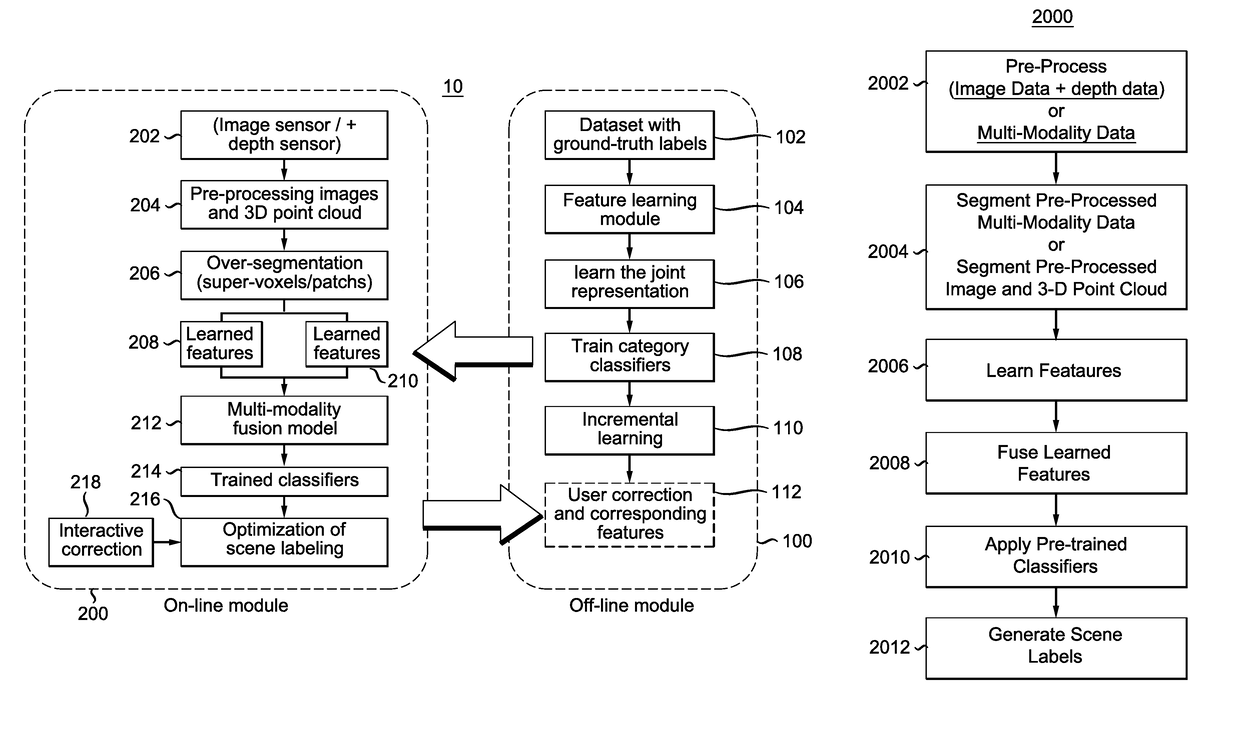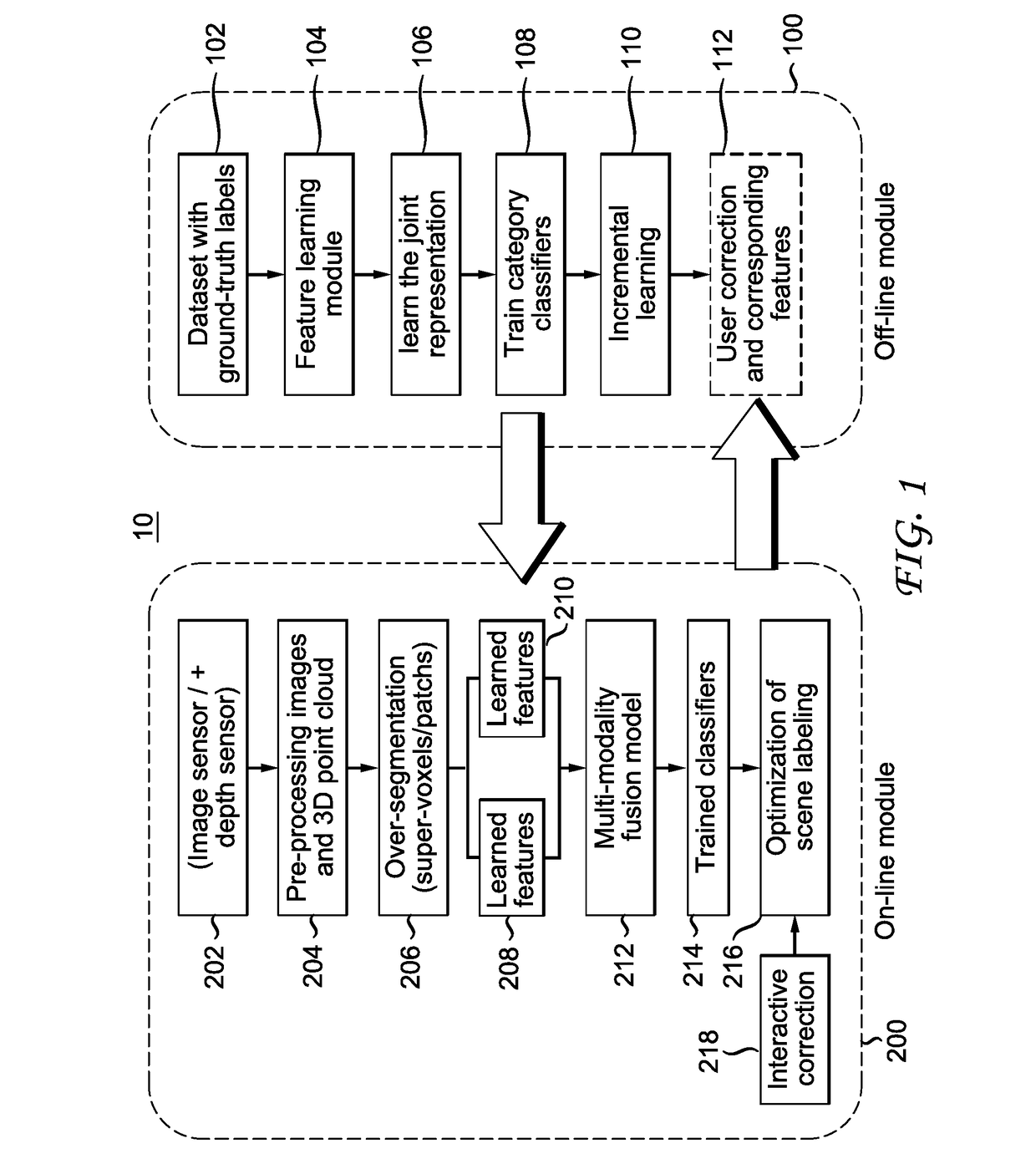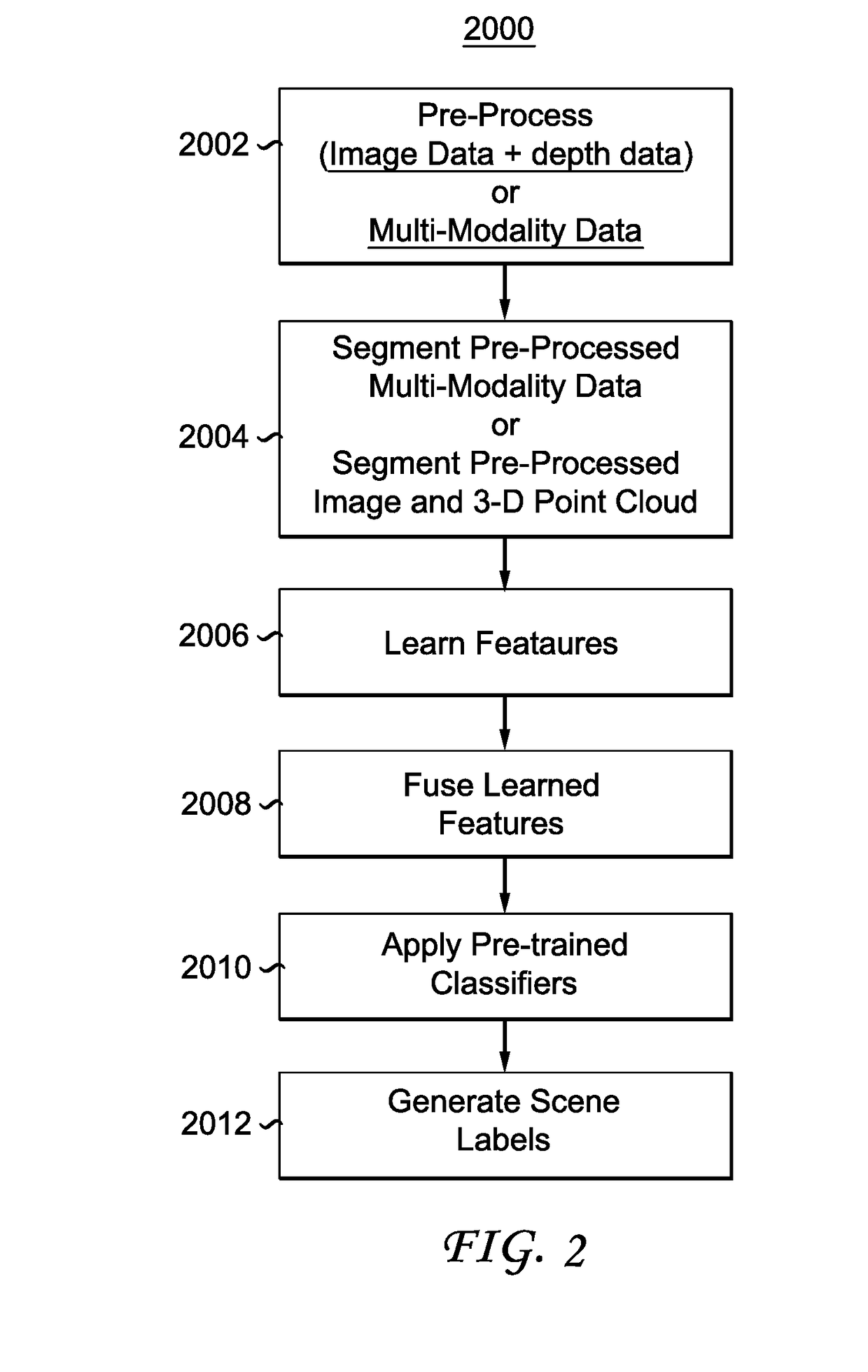Scene labeling of RGB-D data with interactive option
a technology of rgb data and labeling options, applied in the field of scene labeling of rgb data with interactive options, can solve the problems of difficulty in scene labeling, low quality depth data provided by mobile devices (e.g. google tango), and present-day labeling techniques that suffer from the problem of how to represent the features of sensor data
- Summary
- Abstract
- Description
- Claims
- Application Information
AI Technical Summary
Benefits of technology
Problems solved by technology
Method used
Image
Examples
Embodiment Construction
[0014]FIG. 1 depicts a system 10 for accomplishing scene labeling in accordance with the present principles. The system 10 typically takes the form of one or more processors (computers) along with various peripheral devices, such as a key board, mouse, monitor and the like, (all not shown), together with supporting elements, such as power supplies, network communications interfaces and the like (all not shown). Alternatively, the system 10 could take the form of one or more dedicated integrated circuits and or programmable arrays.
[0015]The system 10 includes two modules, an off-line module 100 and an on-line module 200. In the event the system takes the form of a single processor, the two modules 100 and 200 could take the form of separate software programs. Alternatively, the system 10 could take the form of separate processors (not shown), each implementing a separate one of off-line and on-line modules 100 and 200, respectively. In other embodiments of the system 10, the off-line...
PUM
 Login to View More
Login to View More Abstract
Description
Claims
Application Information
 Login to View More
Login to View More - R&D
- Intellectual Property
- Life Sciences
- Materials
- Tech Scout
- Unparalleled Data Quality
- Higher Quality Content
- 60% Fewer Hallucinations
Browse by: Latest US Patents, China's latest patents, Technical Efficacy Thesaurus, Application Domain, Technology Topic, Popular Technical Reports.
© 2025 PatSnap. All rights reserved.Legal|Privacy policy|Modern Slavery Act Transparency Statement|Sitemap|About US| Contact US: help@patsnap.com



